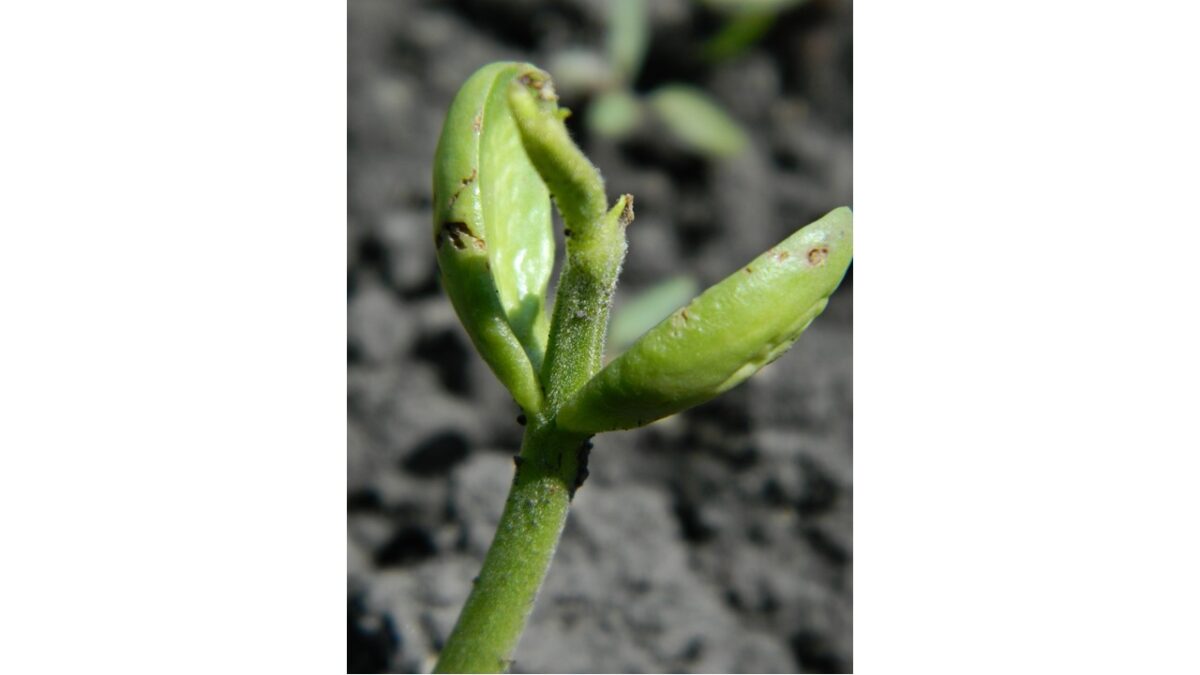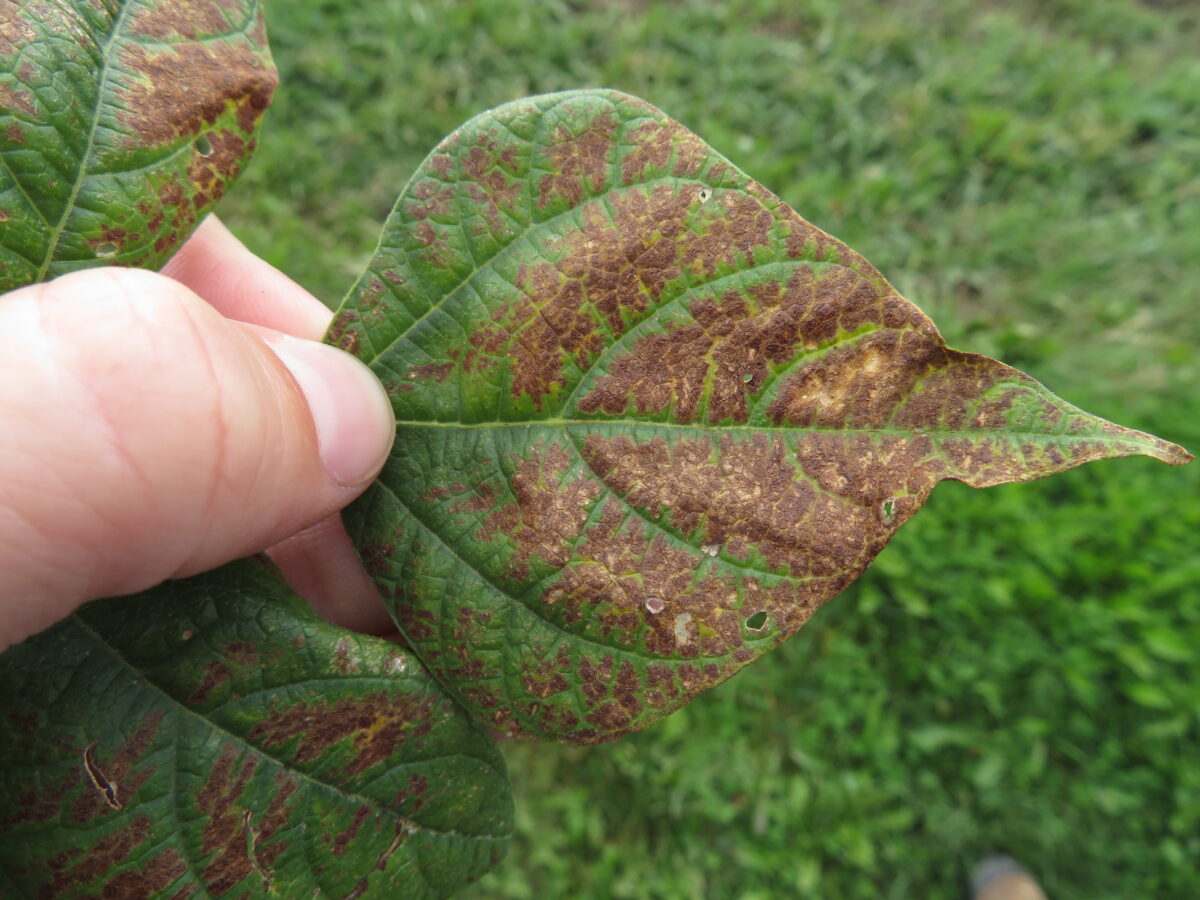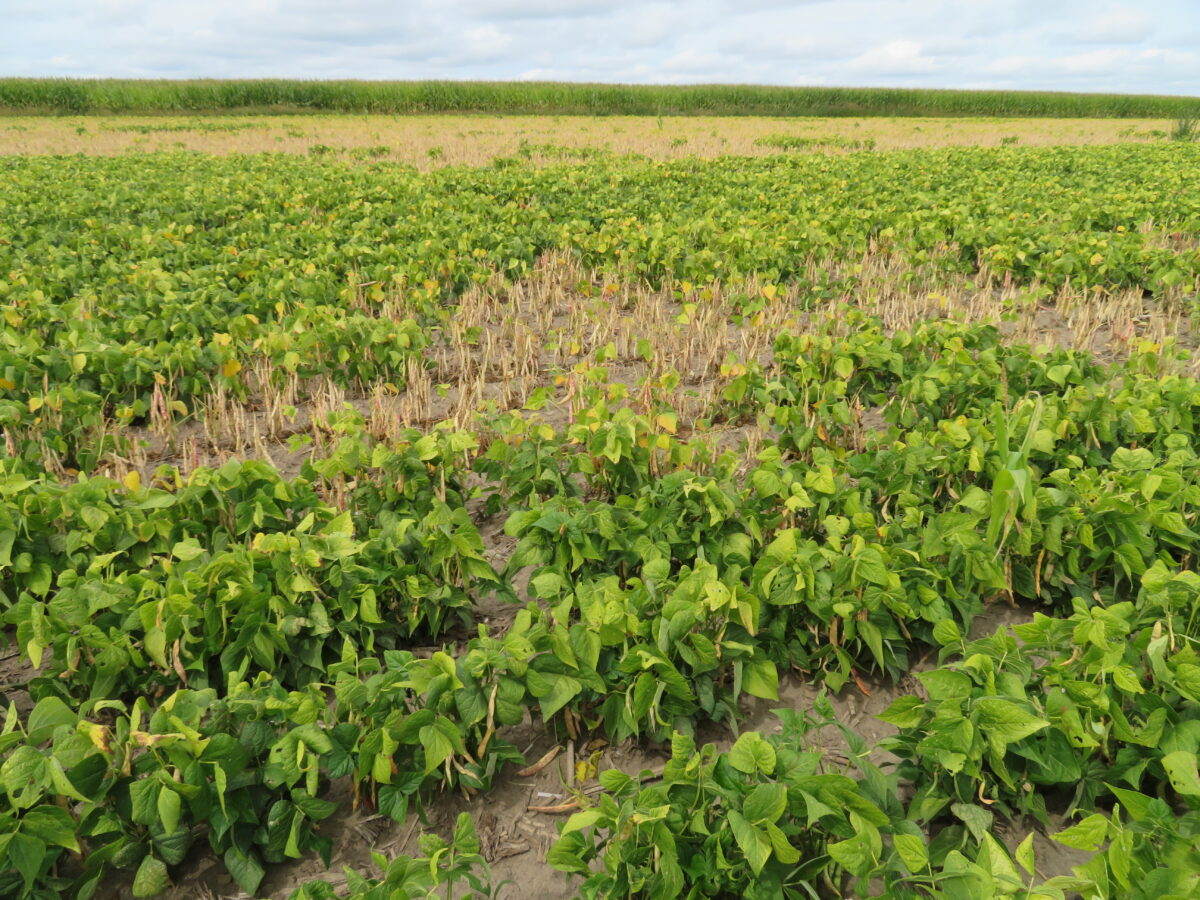Dry edible beans are one of the crops most sensitive to compaction, tillage hard pans or poor soil structure. Often plants become stunted because diminished root growth cannot sustain top growth. Swollen hypocotyls (lower stem) may be observed. Restricted or stressed root systems often develop root rot disease. Options to alleviate compaction or improve soil…Continue readingSoil Compaction and Soil Structure
Category: Other crop problems
Hail
Hail can be devastating to a dry bean crop. Dry edible beans have a much more limited ability to recover from hail than soybeans. Determinate plant varieties are less likely to recover than Type II indeterminate types. When evaluating hail damage, check for bruising on the plant stem. Stems damaged during the vegetative stage may…Continue readingHail
Fall Frost Prior to Harvest
The extent of fall frost damage depends on how low the temperature gets and for how long. Light frost (0 to -1°C) may kill the top leaves but not penetrate the canopy. In this case, plants will continue to mature but will take longer. There may be some green seed where leaves were killed. If…Continue readingFall Frost Prior to Harvest
Dry beans are very sensitive to frost and should be planted after risk of frost has passed. The ideal germination temperature for dry beans is 15°C or higher. Cool soil temperatures at planting may delay germination and reduce rates of emergence, particularly if seed is of poor quality. Frost damage may be apparent as dark,…Continue readingSpring Frost and Temperature Stress
Bald Heads
Bald heads refer to seedlings that emerge with damaged or no growing point. Cotyledons (seed leaves) may or may not be present. Plants may develop auxiliary buds at the base of cotyledons but they fail to develop. Without a growing point, plants eventually die. The most common cause of bald heads is mechanical damage to…Continue readingBald Heads
Sunscald
Sunscald is caused by intense concentration of the sun’s heat on plant tissue. Sunscald is not considered to affect yields. Injury often occurs when bright sunny days follow cloudy, warm and humid conditions. Sunscald can occur on leaves, stems or pods and most often affects new, tender leaf tissue at the top of the plant.…Continue readingSunscald
Bronzing
Symptoms Bronzing is a type of foliar crop injury that starts off as brown or bronze flecks on the upper leaf surface but spreads as plant cells die, leaving necrotic and chlorotic spots. Severe symptoms also include early senescence, leaf yellowing and loss, and rapid aging of the plant. (Campbell Fraser, 2009). Cause of Bronzing…Continue readingBronzing
Green Patch
Green Patch, sometimes called “crazy beans”, is a syndrome occurring in Ontario dry beans for which a cause has not been identified. It is so called because at harvest time when most plants are maturing and drying down, patches will remain green and growing. The greenness of plants is not in itself a major concern,…Continue readingGreen Patch





